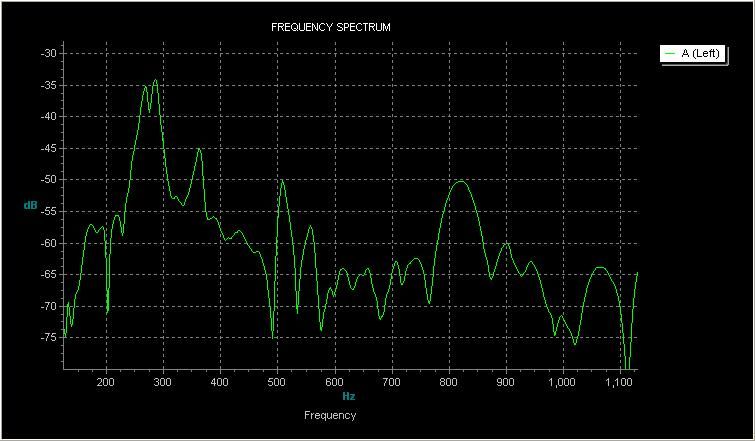I am sure everyone here has taken a piece of wood (back or top) held it in their fingers at a node point and tapped it and listened to it ring. Pretty sure anyone that has done that has taken the same piece of wood that was joined together with its mate and braced with spruce (or whatever flavor of brace wood you prefer) and tapped it again. Did you hear the same ringing tone that you heard with the bare plate? I doubt it. So the bracing does do a lot to change the resonant frequencies and dampening of the plates.

Tap tone of a back of one of the guitars I built. Notice the big hump at around 275 Hz. That is the lower bout. Tap the back of your guitar, you probably have two main resonances, one for the lower bout and one for the upper bout. I can't remember exactly but my guess is that the 800 Hz hump is the upper bout resonance. The lower resonance is about 15-20 dB higher than the rest of the spectrum. Guess what you are going to hear more of in the character of your sound? Might be a place to start a serious look at what your back is doing. Changing the back thickness and brace it differently and you will greatly effect the sound. Given different pieces of wood have different properties even if from the same tree I am not sure we can generalize on the tone of the wood without including the size of guitar and bracing. Leave the back thick enough and heavy braced you will not hear much going on. May need to think of it as a system.